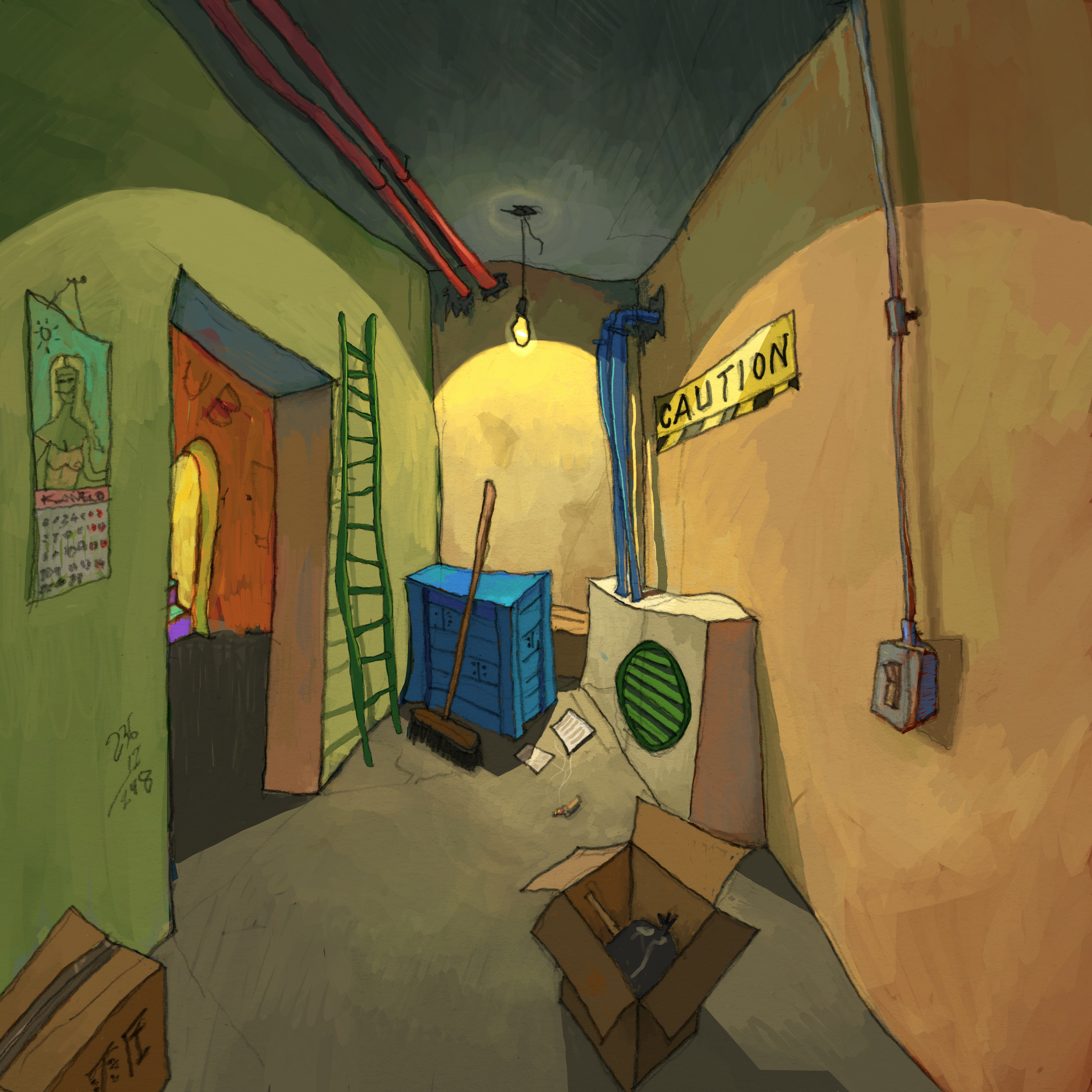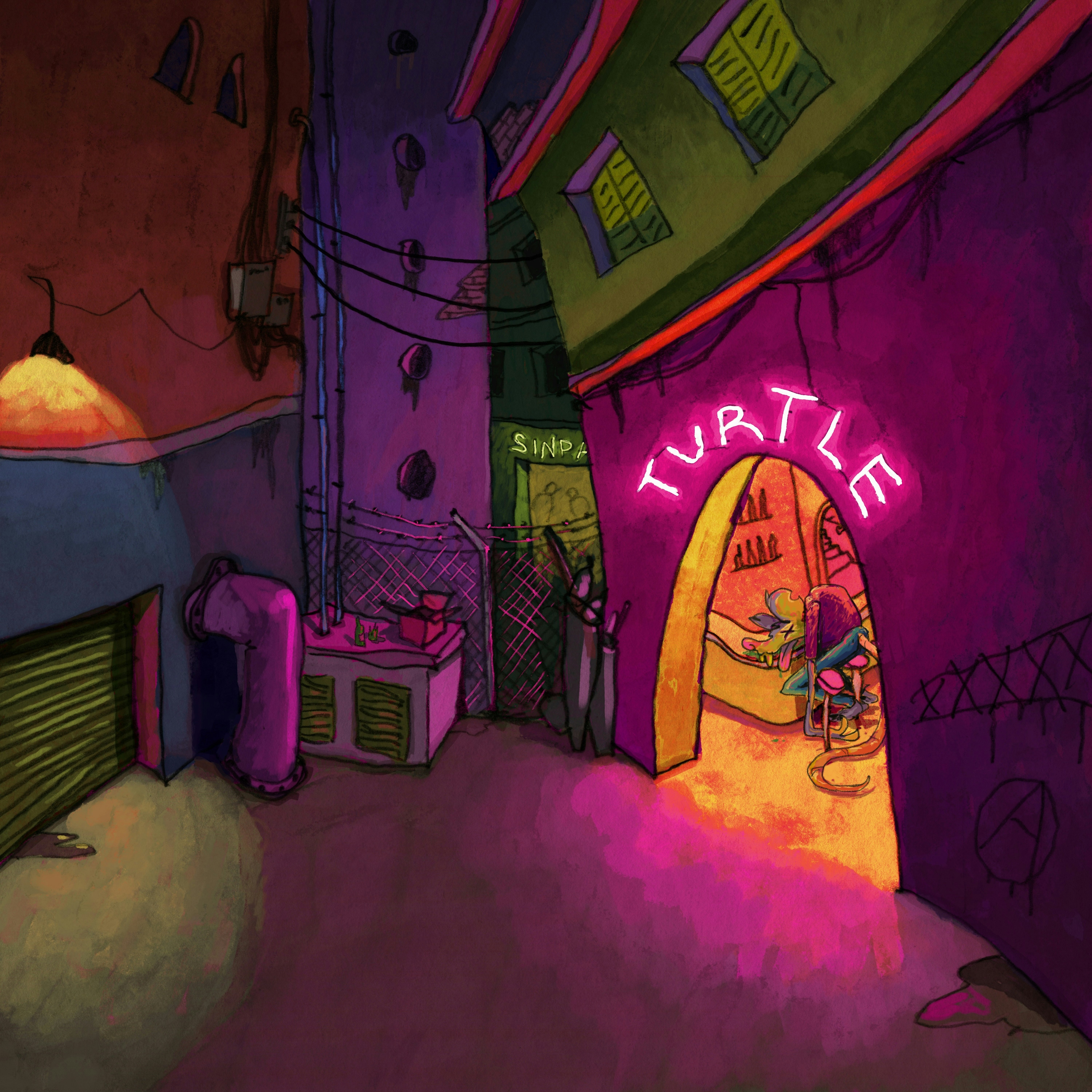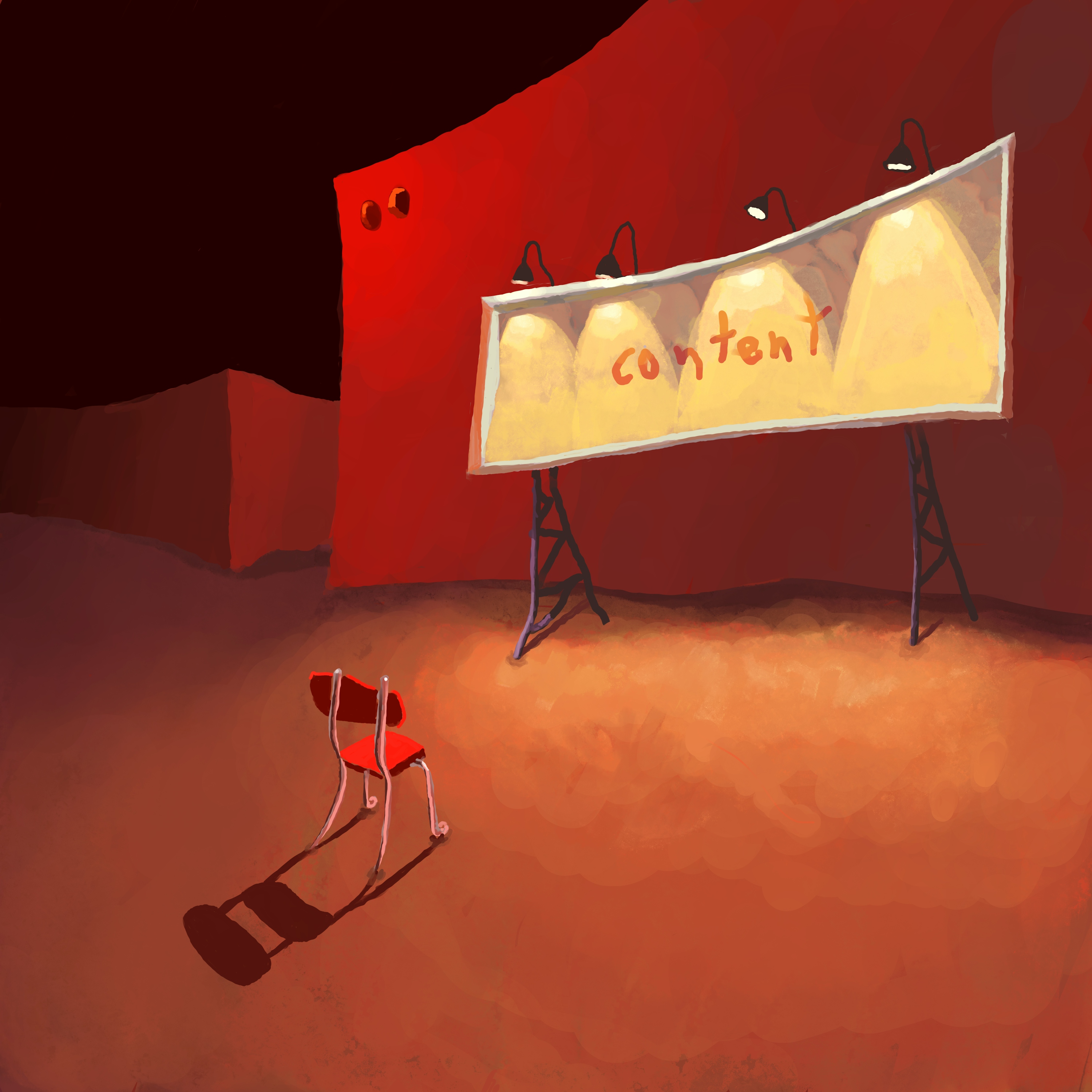A gust of color, a stroke, a line, a glimmer in the eye, almost imperceptible. The work of an abstract artist is complex. It combines the use of color, form and texture, with a touch of mystery and ambiguity. It asks us to see art, and by extension, the world, in a different way.
Liceoty is a digital painter who works with light and color in order to tell stories of people and places, some that feel familiar, and others, totally alien. His pieces are like snapshots of a dream, where the colors blend and merge in unexpected ways. Though brought to life by a vivid color palette, upon further inspection we can see shadows, facial expressions, and smudged edges that pulse with a sense of mystery.
Liceoty’s work is heavily influenced by abstract expressionism and his pieces often have an emotional intensity that draws the viewer in. He uses bold brushstrokes and vibrant hues to convey feelings of joy, sadness, anger, and everything in between. His paintings are a reflection of the human experience, capturing the complexities and fluctuations of human emotions.

The Art of Lasting Impressions
Like many practicing artists, Liceoty grew up with an artist in the family. His grandfather was a painter whose impressionist works really influenced him, both in the embrace of painting and in style. “La capacidad es ilimitada,” he says. “Tengo mucha libertad en lo que puedo hacer.” With unlimited capabilities and the freedom to create whatever he wants, he can create scenes “sin atarme a nada en concreto,” or without being tied to anything concrete.
Liceoty is also drawn to the work of de Chirico, Rembrandt, and Goya painters who were masters at utilizing contrast with color and light in order to create dramatic effect, to tell stories through light and shadow. But our conversation continues to return to Goya, and Liceoty notes his fascination with Goya’s ability to tell stories through the faces of the figures in his paintings, and the impressions of the decrepit. Goya creates a world that Liceoty likes exploring.
And that is perhaps why so many of Liceoty’s paintings are brimming with the details of life. A dining room with paintings hanging on the walls, a crowd of people entering a plaza, each with their own expression. Each scene peers into a different universe, and contemplates the relationship between subjects and their surroundings.


A World of Color
After making the initial sketch, Liceoty paints with greens and grays. It is a neutralizing color palette, one that welcomes other colors into the picture. “Verde, que te quiero verde,” wrote the Spanish poet Federico Garcia Lorca, ruminating on the entrancing effect of the color green. It is a color that calls to Liceoty, that shows him the first steps into the work.
“Cuando tengo ese verde, o un azul muy apagado,” he said, “pues, le intento meter un contraste de un color más puro, con más…con más ficha.” A calm green, or a pale blue, invites Liceoty to add colors to contrast it with, a purer color, a color with more…depth. He cultivates this same sense of curiosity and thoughtful discovery to his entire practice.
“Lo voy haciendo sobre la marcha,” he told me. “I’m doing it as I go.” From the start, he doesn’t have a specific idea of what he wants to create, what colors he wants to use. He begins with the sketch, and follows the colors. Forms begin to take shape, and characters emerge. The scene comes to life through the conjuring of colors and brush strokes.
His artworks are colorful, playful even, but they carry a darker side, a sense of mystery humming just below the surface: an elongated shadow, a mysterious glint in the eye, a heavy sense of waiting. “El contraste lo que quiero es hacer que el color que yo quiera destaque,” he said, “y digamos los oscuros, pues siempre tiendan a neutralizar un poco la composición, no?”
He is speaking quite literally about color, how darker colors tend to neutralize the composition and how he wants certain colors to stand out, yet his words also apply to the themes of his work. Using color, he illuminates the darkness within his characters, bringing their true colors to light.
“Lo que quiero yo intentar expresar con eso, con los colores esos oscuros, es establecer un límite en el paisaje,” he said. “No una especie como de pared, algo que termine ahí y entonces pues por eso me gustan.” For Liceoty, the darker parts of the painting act as edges, or limits, but ones that are more flexible, not like a wall, he says. Instead a line, a smudge, a sort of opening between light and dark.
The Story of “The Monk”
Liceoty has been interested in monks for some time. “Me gustan mucho los monjes,” he said. “Uno tanto por la religión y por la espiritualidad, por la estética de las capas de los monjes, los atuendos que llevan.” There is something to their religion, to their spirituality, as well as the aesthetic of their robes, the layers.
For Liceoty, “The Monk” was its own medication, a move away from what had become comfortable. “Quería romper con lo que llevo haciendo durante un año que es lo que llevo pintando,” he said. “Quería romper, pues con la tendencia esa siempre de tener que dibujar muchos personajes, dibujar muchas escenas secundarias y, como te digo yo, a los lejos no hacer escenas a lo lejos.” For this piece, Liceoty wanted to break with what he had been doing for the previous year.
Instead of having many people in the scene, he focused on a singular subject. Instead of creating multiple scenes in one piece, or depicting scenes from a distance, he focused in on one person, and let him take up the entire canvas. He played with greens and violets, and utilized more light than usual. That was part of the experiment as well, reaching for colors that are different from those that he usually calls his own.
“Quiero trabajar más la luz,” he told me, “porque es verdad que en muchos de mis cuadros la luz se deja de lado y importa más el escenario el color y la expresión, que la luz no la trabajo mucho.” In the past, he feels like more of his attention was put onto the setting, color, and the expression of the characters, but the light wasn’t as prominent.
“Y lo que quiero es empezar a trabajar la luz. En los personajes, en los ropajes…una pintura abstracta o que dibuja personaje y a la vez le mete luz, pues algo bastante interesante. Quiero llegar a eso.” He wants to explore light in his abstract work, in the characters, the clothing. A painting that draws and character and also shines light onto it, that seems quite interesting. He wants to reach towards that.

Art is the Journey, Not the Destination
Liceoty’s work is a testament to how an artist can transcend traditional boundaries and create a new form of expression. Through his abstract paintings, he invites viewers to see the world through his eyes, where the ordinary becomes extraordinary and the mundane is infused with magic.
One of Liceoty’s greatest strengths as an artist is his ability to find beauty in the most unexpected places. His keen eye and attention to detail allow him to uncover the hidden gems in everyday scenes, whether it’s a bustling plaza or a quiet dining room.
But what sets Liceoty apart from other digital painters is his unique style and technique. He combines traditional painting techniques with cutting-edge technology, using digital tools to enhance and add depth to his pieces. This fusion of old and new creates a mesmerizing effect, captivating viewers and inviting them into Liceoty’s world.
In a time where technology dominates the conversations around art, Liceoty stands out as an artist who embraces innovation while staying true to the essence of traditional art forms. His work serves as a reminder that art knows no boundaries and can be constantly redefined and reinvented.



































